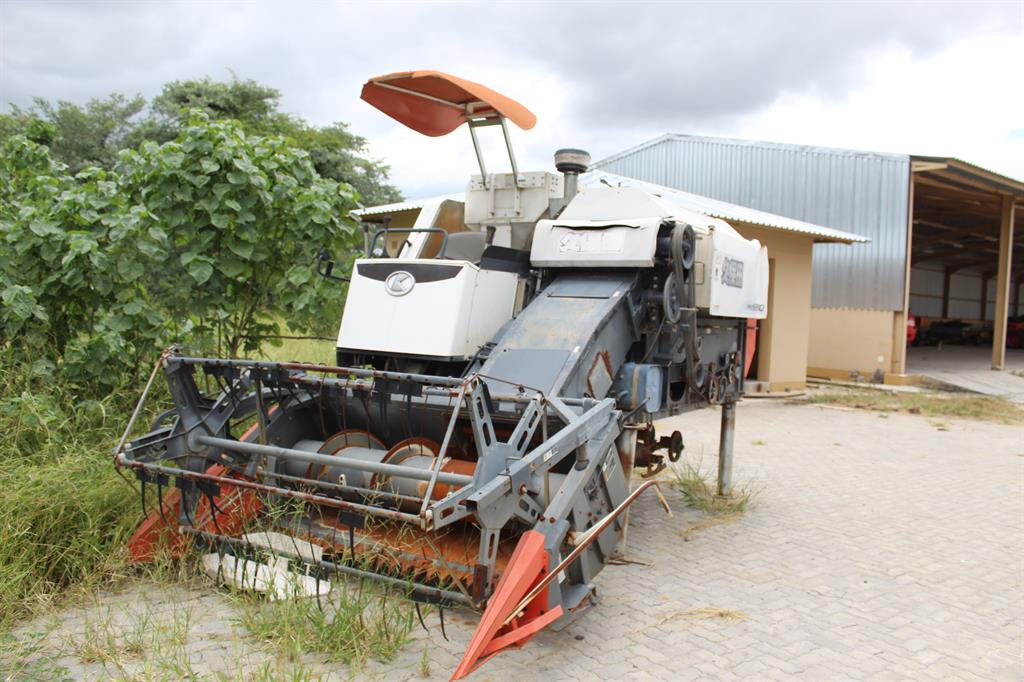Shoddy equipment hampered green schemes
OGONE TLHAGE
WINDHOEK
Employees of Agribusdev say old and ineffective infrastructure plagued the country’s irrigation schemes, making it impossible to run them successfully.
The ministry of agriculture recently wrote to the company’s acting MD, Berfine Autindi, informing her of its decision to close Agribusdev.
Employees are laying the blame squarely on the agriculture ministry’s inability to offer the company sufficient support to make the country’s irrigation schemes a success.
South American equipment
Not only was the infrastructure at the green schemes old, but Agribusdev also struggled with farming equipment it had received from countries such as Brazil and Argentina, which were prone to breaking down.
“When Agribusdev took over, some new farming equipment and implements at the schemes were procured by the ministry of agriculture from Brazil and Argentina, however, many of them break down and could not be repaired because the parts to repair and service them are not available in the country,” a report by the employees noted.
Employees further questioned the design of the green schemes Agribusdev had to manage, saying they were not optimally set up to ensure profitability.
“The majority of these huge irrigation infrastructure attracts huge costs of electricity and are hindrance to the sustainability and profitability concept.
“The location of the Ndonga Linena project, for instance, requires putting up high-capacity booster pumps to be able to pump water from the Kavango River and this consumed a huge amount electricity that would be a challenge even if a solar system was to be put up,” the employees wrote.
Agribusdev further could not optimally use the Etunda irrigation scheme because other users were using water upstream from the scheme.
“Etunda Projects sourced water from the NamWater channel that stretches approximately six kilometres from the Omahenene border post to Etunda Irrigation Project. However, Agribusdev is billed by NamWater at Omahenene border post while the channel is exposed for six kilometres, allowing communities alongside the channel to draw water and set up gardens,” the report said.
Chinese manuals
In the case of the Kalimbeza, Etunda and Shadi projects, Agribusdev was provided with a rice milling plant with a capacity of two tonnes per day instead of the required 24 tonnes per day, the report noted.
The machines provided to the Etunda and Shadi projects had never worked since arriving in Namibia.
“The milling plants at Shadi and Etunda never worked since they were installed by the ministry of agriculture. While the rice sorter and maize milling plant at Etunda have been experiencing recurrent technical glitches and it is a challenge to repair them since the manuals are in Chinese, nor were there agents in Namibia or southern Africa,” the report said.
WINDHOEK
Employees of Agribusdev say old and ineffective infrastructure plagued the country’s irrigation schemes, making it impossible to run them successfully.
The ministry of agriculture recently wrote to the company’s acting MD, Berfine Autindi, informing her of its decision to close Agribusdev.
Employees are laying the blame squarely on the agriculture ministry’s inability to offer the company sufficient support to make the country’s irrigation schemes a success.
South American equipment
Not only was the infrastructure at the green schemes old, but Agribusdev also struggled with farming equipment it had received from countries such as Brazil and Argentina, which were prone to breaking down.
“When Agribusdev took over, some new farming equipment and implements at the schemes were procured by the ministry of agriculture from Brazil and Argentina, however, many of them break down and could not be repaired because the parts to repair and service them are not available in the country,” a report by the employees noted.
Employees further questioned the design of the green schemes Agribusdev had to manage, saying they were not optimally set up to ensure profitability.
“The majority of these huge irrigation infrastructure attracts huge costs of electricity and are hindrance to the sustainability and profitability concept.
“The location of the Ndonga Linena project, for instance, requires putting up high-capacity booster pumps to be able to pump water from the Kavango River and this consumed a huge amount electricity that would be a challenge even if a solar system was to be put up,” the employees wrote.
Agribusdev further could not optimally use the Etunda irrigation scheme because other users were using water upstream from the scheme.
“Etunda Projects sourced water from the NamWater channel that stretches approximately six kilometres from the Omahenene border post to Etunda Irrigation Project. However, Agribusdev is billed by NamWater at Omahenene border post while the channel is exposed for six kilometres, allowing communities alongside the channel to draw water and set up gardens,” the report said.
Chinese manuals
In the case of the Kalimbeza, Etunda and Shadi projects, Agribusdev was provided with a rice milling plant with a capacity of two tonnes per day instead of the required 24 tonnes per day, the report noted.
The machines provided to the Etunda and Shadi projects had never worked since arriving in Namibia.
“The milling plants at Shadi and Etunda never worked since they were installed by the ministry of agriculture. While the rice sorter and maize milling plant at Etunda have been experiencing recurrent technical glitches and it is a challenge to repair them since the manuals are in Chinese, nor were there agents in Namibia or southern Africa,” the report said.




Comments
Namibian Sun
No comments have been left on this article